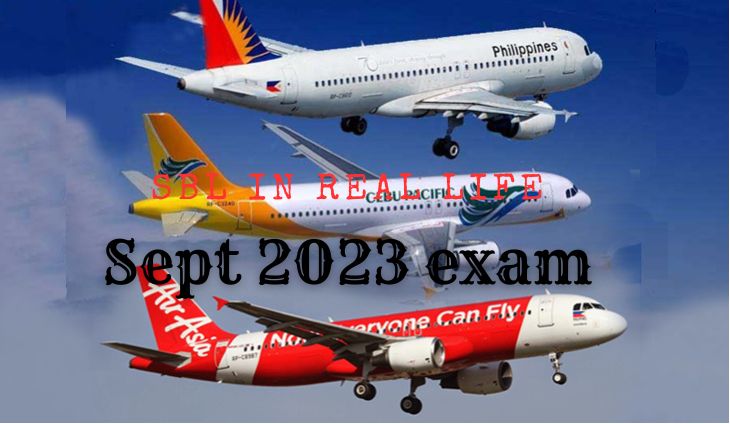
The September 2023 SBL (Strategic Business Leader) Pre Seen case study is based on the airline industry so the examiner may draw some examples of real-life scenarios when setting questions. The following article relates competitive environment and uses Porter’s 5 forces. In the exam you don’t need to describe the model but use it to generate ideas and paragraphs for the briefing paper or r
Analysing the Competitive Environment in the UK Budget Airline Industry: A Porter’s Five Forces Approach
The UK budget airline industry has experienced a rapid transformation, reshaping the way people travel and challenging traditional carriers. By applying Michael Porter’s Five Forces framew ork, we can gain a comprehensive understanding of the competitive dynamics shaping this industry.
Let’s delve into each force, accompanied by relevant UK examples:
1. Threat of New Entrants:
The budget airline sector in the UK has historically been attractive to new entrants due to its simplified business models and low-cost
strategies. However, established players like EasyJet and Ryanair have created significant entry barriers through their economies of scale and brand recognition. For instance, EasyJet’s extensive route network and customer loyalty programs deter new entrants. The acquisition of Flybe by the consortium led by Virgin Atlantic and Stobart Air in 2019 demonstrated the challenges even established airlines face. This event showcased the impact of consolidation to prevent new entrants from gaining a foothold.
2. Bargaining Power of Suppliers:
In the UK budget airline industry, suppliers such as aircraft manufacturers and fuel providers hold substantial power. The grounding
of Boeing’s 737 MAX highlighted the vulnerability of airlines to supplier decisions. Ryanair’s reliance on Boeing planes and the subsequent disruptions to its operations underscored the importance of supplier relationships. Additionally, the volatility of oil prices exemplifies supplier influence. When oil prices increase, airlines’ operating costs rise significantly, impacting their profitability. The 2021 surge in oil prices due to geopolitical events demonstrated this vulnerability and the need for strategic fuel hedging.
3. Bargaining Power of Buyers:
The rise of online travel agencies and comparison platforms has amplified the bargaining power of passengers in the UK budget airline
sector. Platforms like Skyscanner and Kayak allow travelers to compare prices and services effortlessly. Airlines must offer competitive prices and customer experiences to attract bookings. An example of this is Ryanair’s “Always Getting Better” program, which introduced improvements in customer service and amenities to respond to customer demands and maintain competitive advantage. Additionally, passengers’ ability to opt for flexible travel dates and times through dynamic pricing models showcases their influence on pricing decisions.
4. Threat of Substitute Products or Services:
The UK budget airline industry faces threats from various substitutes, including trains, buses, and alternative leisure activities. The
development of high-speed rail networks, such as the HS2, offers a viable alternative for short distances. Additionally, advancements in video
conferencing and remote work practices can potentially reduce the demand for business travel. This trend was evident during the COVID-19 pandemic when virtual meetings replaced many flights, signaling the influence of substitutes on the industry’s demand.
5. Intensity of Competitive Rivalry:
The competitive rivalry in the UK budget airline sector is intense, characterized by price wars, service differentiation, and market share
battles. The ongoing rivalry between EasyJet and Ryanair showcases this competition. For instance, both airlines engaged in fare reductions and
advertising campaigns to attract passengers during peak travel seasons. This rivalry necessitates constant strategic innovation, reflecting the need for robust exam techniques to stay ahead.
In conclusion, applying Porter’s Five Forces framework to the UK budget airline industry provides valuable insights into its competitive
landscape. As someone who prepares individuals for ACCA examinations and is passionate about discussing exam techniques, I can see that the parallels between strategic industry analysis and academic success are evident. Just as the industry players navigate these forces to succeed, your strategic mindset can guide your journey toward excellence in ACCA preparation and other academic pursuits. By drawing insights from the competitive environment of the budget airline industry, you can refine your strategies for online study success.
If you missed the other articles relevant to September 2023 exam you can find them here
PLEASE SHARE THIS ARTICLE WITH ANYBODY SITTING THE ACCA SBL (Strategic Business Leader) Exam
Copyright © 2025 martywindle.com